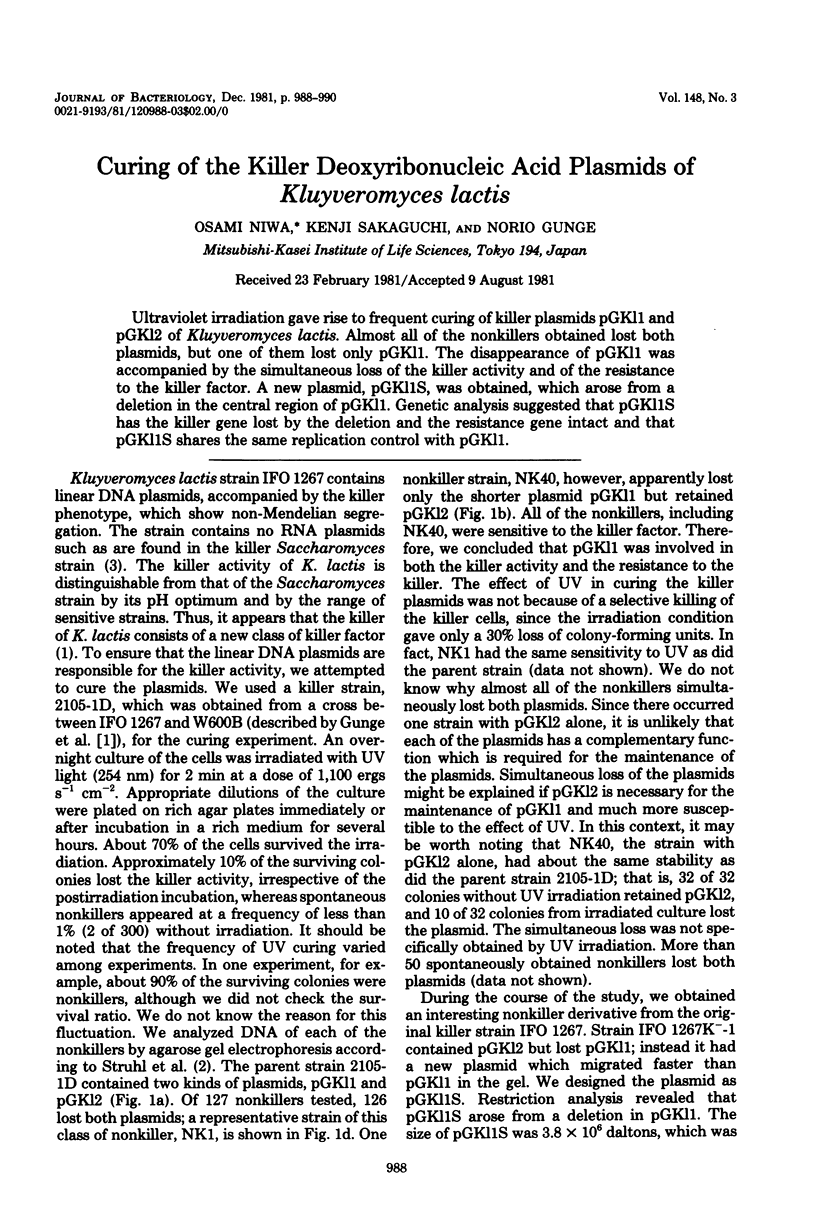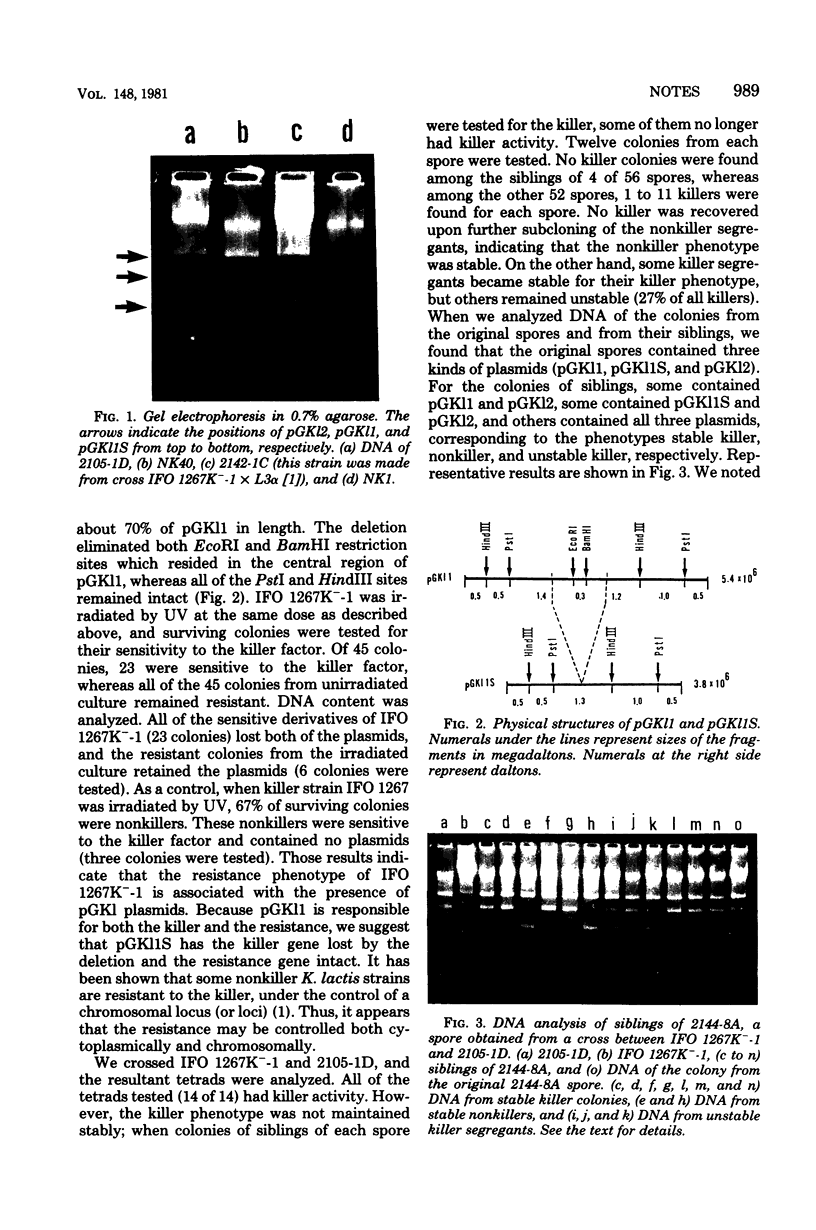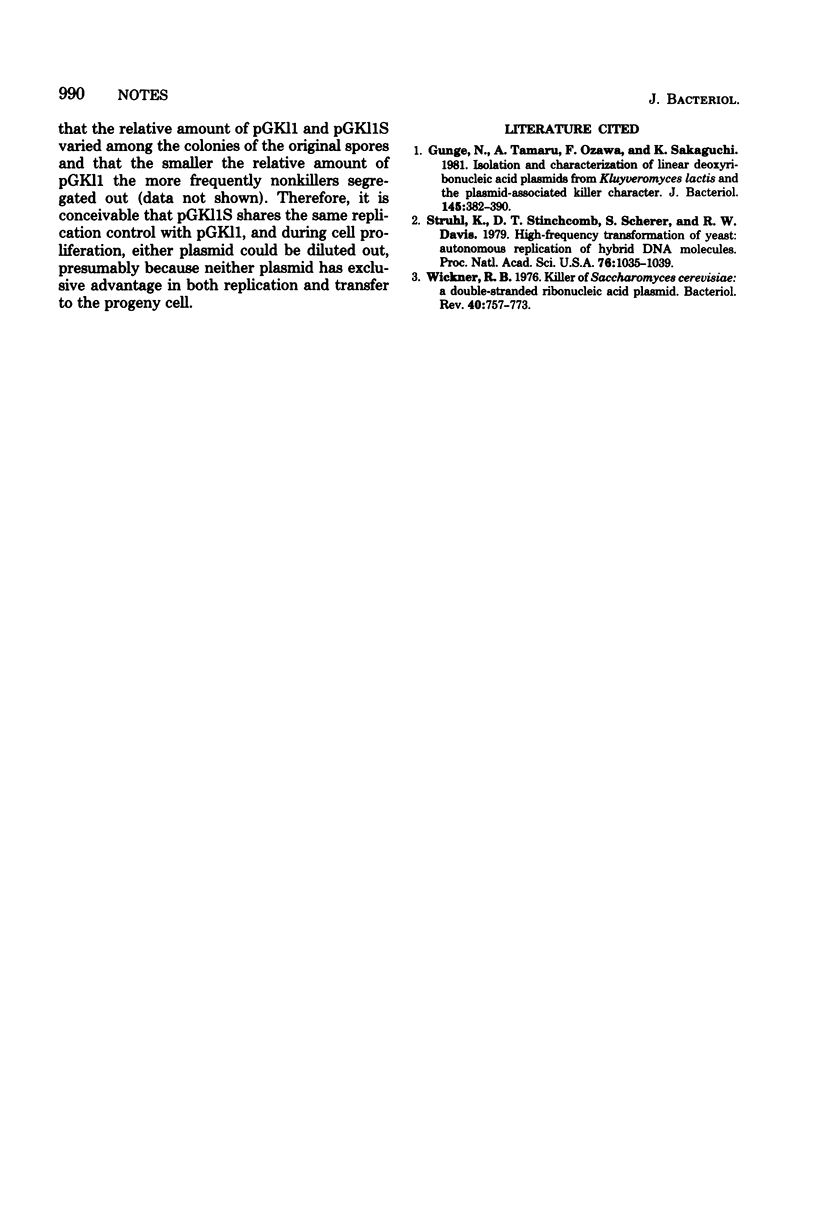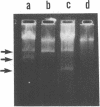Abstract
Ultraviolet irradiation gave rise to frequent curing of killer plasmids pGKl1 and pGK12 of Kluyveromyces lactis. Almost all of the nonkillers obtained lost both plasmids, but one of them lost only pGKl1. The disappearance of pGKl1 was accompanied by the simultaneous loss of the killer activity and of the resistance to the killer factor. A new plasmid, pGKl1S, was obtained, which arose from a deletion in the central region of pGKl1. Genetic analysis suggested that pGKl1S has the killer gene lost by the deletion and the resistance gene intact and that pGKl1S shares the same replication control with pGKl1.
Full text
PDF


Images in this article
Selected References
These references are in PubMed. This may not be the complete list of references from this article.
- Gunge N., Tamaru A., Ozawa F., Sakaguchi K. Isolation and characterization of linear deoxyribonucleic acid plasmids from Kluyveromyces lactis and the plasmid-associated killer character. J Bacteriol. 1981 Jan;145(1):382–390. doi: 10.1128/jb.145.1.382-390.1981. [DOI] [PMC free article] [PubMed] [Google Scholar]
- Struhl K., Stinchcomb D. T., Scherer S., Davis R. W. High-frequency transformation of yeast: autonomous replication of hybrid DNA molecules. Proc Natl Acad Sci U S A. 1979 Mar;76(3):1035–1039. doi: 10.1073/pnas.76.3.1035. [DOI] [PMC free article] [PubMed] [Google Scholar]
- Wickner R. B. Killer of Saccharomyces cerevisiae: a double-stranded ribonucleic acid plasmid. Bacteriol Rev. 1976 Sep;40(3):757–773. doi: 10.1128/br.40.3.757-773.1976. [DOI] [PMC free article] [PubMed] [Google Scholar]




